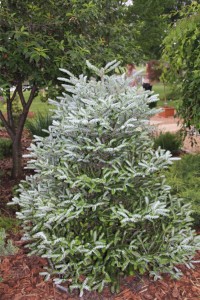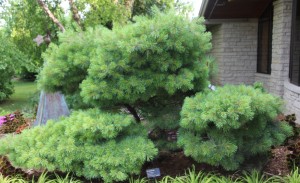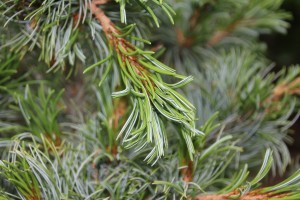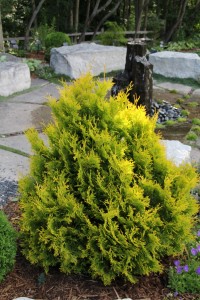We are in the dog days of summer! Record high temperatures across the country have been reported. Let’s face it, climate change is real and the planet is getting warmer, despite record cold temperatures in winter in some areas. With climate change, there are more occurrences of extreme temperatures as well as precipitation such as severe drought, flooding, heavier than usual snowfall, etc. So, how does climate change affect gardeners? To understand the concept, we must first understand how high temperatures affect plant growth and development.
Plant temperature tolerance is the ability of any plant to adapt to a given climate at both low and high temperatures. It is obviously important to use species that not only can survive our winter temperatures, but also our hot summers. Similar to the U.S.D.A. Plant Cold Hardiness Zone map (http://planthardiness.ars.usda.gov/PHZMWeb/), the American Horticultural Society published a plant heat zone map (http://www.ahs.org/gardening-resources/gardening-maps/heat-zone-map). The heat zones are based on the average annual days with temperatures above 86°F (30°C). For example, up in my neck of the woods in Wisconsin, we have four heat zones in the state; zones 2-5 with the cooler (lower number) heat zones in the northern part of the state and the warmer heat zones in the southern and western part of the state and in urban areas. In comparison, North Carolina has seven heat zones (2-8). California has even more heat zones due to its varying climates and elevations.
Unique microclimates can be created at a specific site. Urban areas usually are slightly warmer than rural areas due to the heat island effect created by light reflection off of buildings, heat rising from sewers, and trapping of heat between large buildings. For example, trees planted close to pavement have warmer conditions in summer, than trees planted near turf, especially in the root zone, and have greater water needs. Trees and shrubs in this environment should receive, but rarely get supplemental irrigation compared to those same plants planted in the middle of a lawn or park area with cooler root areas and less heat stress to the tree.

So what does this mean for temperate woody plants?
High temperature stress is important for a number of reasons. The main effect is increased water use. However, water availability is often limited, especially in urban environments, leading to a net loss of moisture within the plant. Leaves loose water quicker through the stomates via transpiration as temperatures rise. The stomates then begin to close and the cooling effect of evapotranspiration is stopped.
Other physiological processes are impacted by high temperatures such as fewer carbohydrates available for plant growth and development, generation of plant pigments (red, purple and blue pigments) and defense used in protecting plants against insects and diseases. When plants with poor heat tolerance are grown in regions that routinely experience high summer day and night temperatures and insufficient moisture, plants will use many of their stored sugars during the evening hours and during the hottest part of the day. For many temperate woody plants, optimum temperatures for photosynthesis are below 86°F (30°C). Above this temperature, net photosynthesis declines with increasing temperatures. If this continues long term, plants can die, especially young plants that do not have many stored carbohydrate reserves and are under drought stress.
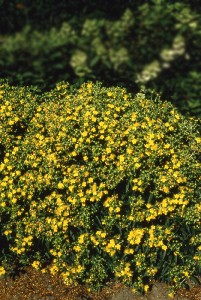

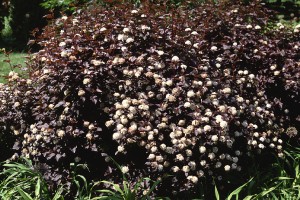
What can we do as gardeners?
Unfortunately, climate change is occurring at a fast rate and each decade is getting warmer and often drier than the preceding decade. Here’s what we can do as gardeners:
- Select non-invasive, pest resistant, stress tolerant plants for your landscape
- Non-drought or heat tolerant landscapes plants will require regular watering to sustain them
- Use of soaker hoses or drip irrigation is better than overhead watering as the moisture is directly applied to the roots with less runoff
- A plant is not truly drought tolerant until it has been established in the landscape for at least three years or more to allow for root growth, especially for trees
- Some native and exotic plants can tolerate these changes, but some native species in natural areas may be lost if our climate continues to get warmer
- Incorporate compost into the soil prior to planting new areas to improve moisture retention and aeration
- Apply 2-4” of bark or wood chips to the top of the soil to retain soil moisture. Make sure the mulch does not touch the trunk of trees or base of shrubs. Excessive mulching (mulch volcanoes) can actually kill landscape plants by impeding air and moisture penetration and invite fungal diseases.
- Cities need to avoid planting trees in tree pits (sidewalk cutouts), i.e. restrained planting areas in sidewalks along streets. These trees are under severe moisture, drainage and heat stress and do not live long. Planting areas that are wide and long work much better for tree health and longevity than planting in tree pits.
Laura Jull, Ph.D.

